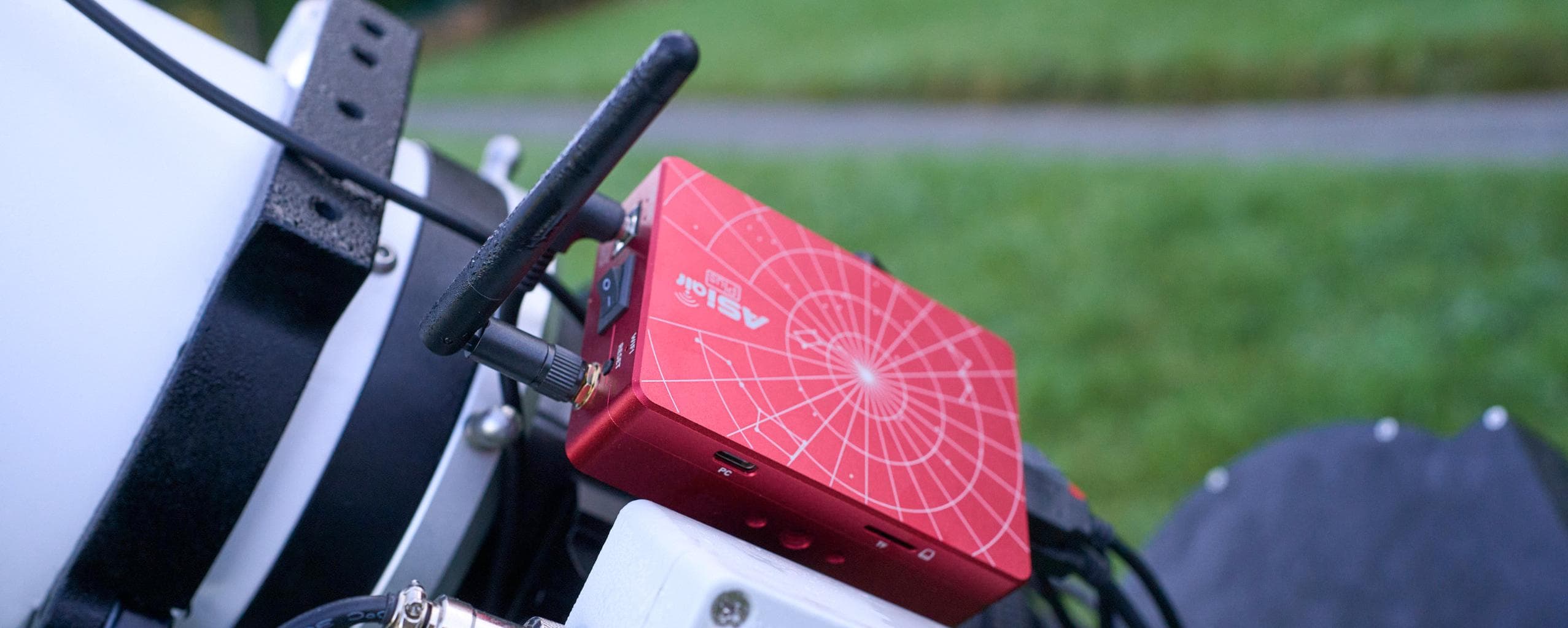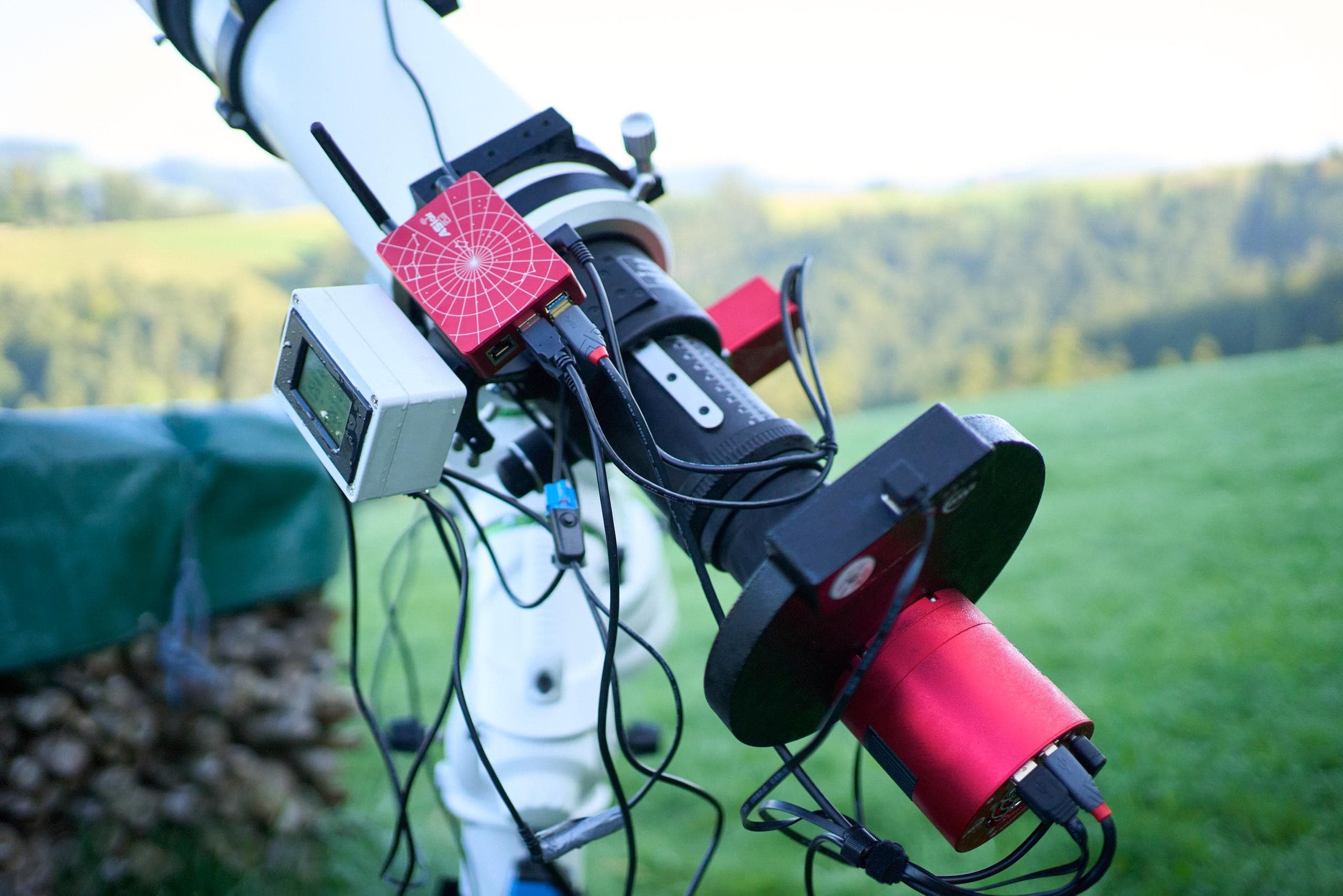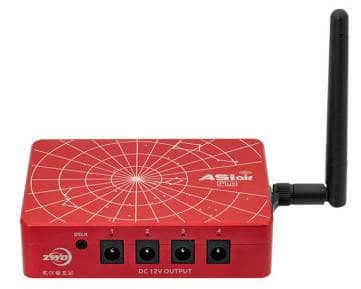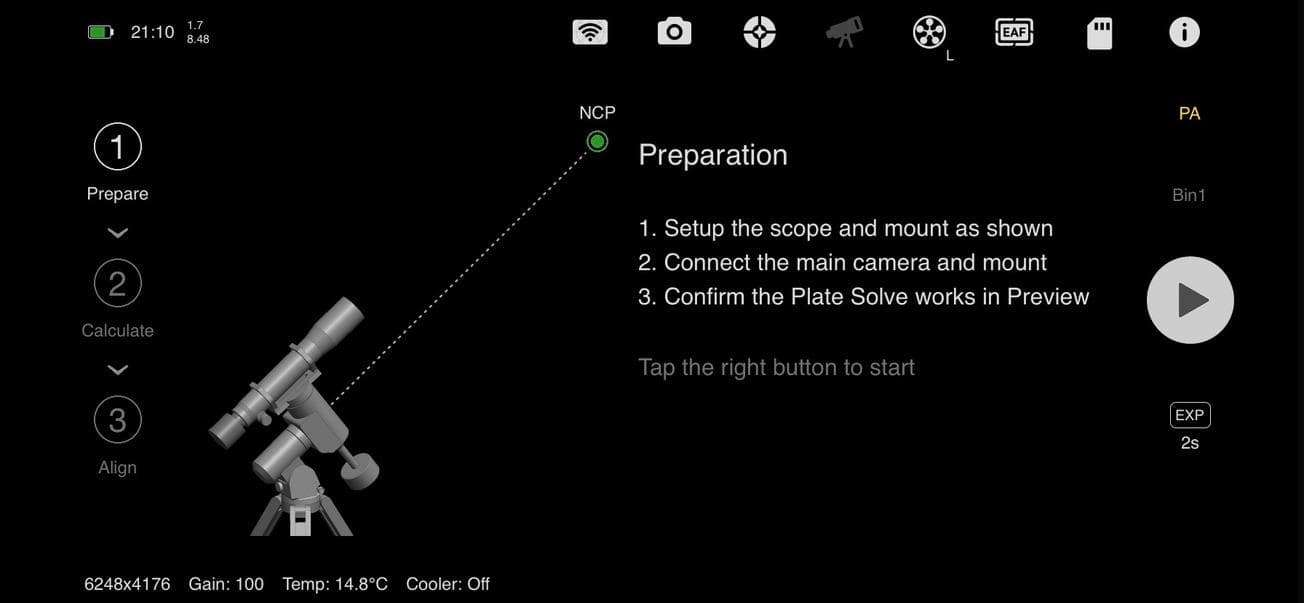ASIAIR Plus Review
This is not a typical review, but more a comparison between the options you have to control
your
astrophotography session.
The ASIAIR Plus is my favorite. You want to know why? Read on.

Summary
Best device you can get if you have portable setup.
Simple, reliable and well thought out
What is the ASIAIR Plus
The ASIAIR is a little computer based on a Raspberry Pi,
that runs Software to control an Astrophographers
gear while taking images.
The ASIAIR Plus is the third iteration of the ASIAIR familiy: ASIAIR, ASIAIR Pro, ASIAIR Plus.
I owned two ASIAIR Pro and meanwhile sold one (because I ordered the Pro version).
Performance wise, the ASIAIR Pro and ASIAIR Plus are almost identical and run the same Firmware (at least from
the Users's perspecitve).
But more on that later.
Choosing a computer to control Astrophotography gear
Basically, you have to choose between:
Notebook or Mini-computer: ASIAIR (Raspberry Pi), Windows-based (x86), Linux-based (Raspberry Pi or x86)).
I have a typical setup many other astrophotographers use today:
Telescope, Mount, Focusser, Off-axis-guider with Guide-camera, main imaging camera, 7-pos filterwheel with LRGB and HSO filters.

Notebook/Laptop controls the gear
Advantages
- Most flexible, no limitations regarding gear you can connect and software it runs
Disadvantages
- Draws more power
- Needs a lot of space (table, box to prevent the Notebook screen to pollute the surrounding area with light)
- In some nights, there is a lot of dew that could harm the Notebook. Needs to be rugged and/or placed inside a box.
- USB cable hangs off the telescope, also long USB cables (especially USB3 cables) can cause problems and need to be of good quality and the length is limited.
- Windows OS most likely required, since very often, the software is not available on Linux or on a Mac.
My personal thoughts:
Best suited for a stationary setup like an observatory. I do not own an observatory and always setup my gear for the night I image.
Since I have to setup everything for each session, I really avoid this solution.
Also, I do not own a Windows computer and much prefer a Unix based system.
Windows based Mini-PC controls the gear
Advantages
- Most flexible, no limitations regarding gear you can connect and Software it runs
Disadvantages
- Draws more power than a Raspberry Pi
- Needs to be controlled by Remote-Desktop solution (like NoMachine)
- UI suboptimal for Touch-control (Phone, Tablet), to say the least
- Windows OS most likely required, since very often, the software is not available on Linux or on a Mac.
My personal thoughts:
Prima-Luca labs have really nice (but expensive) hardware. There are many cheap Mini-PCs that come with pre-installed Windows.
Still, I hate the Remote-Desktop idea and the UI, that is simply not made for this.
Linux based Mini-PC controls the gear
Advantages
- Open Source, no limitations regarding gear you can connect.
- Runs easily on a Raspberry Pi
Disdvantages
- Software very limited, KStars and the like are not as good as some options that are only available on Windows (like Nina)
- UI is not made to be controlled from a mobile device
My personal thoughts:
Before I bought my first ASIAIR Pro, I tried AstroBerry on a Raspberry Pi 4 and absolutely wanted to like it.
It was a huge pain to use on a mobile device. I must admit I didn't try Stellarmate, but I doubt I would have liked its UI.
ASIAIR Plus
Advantages
- Has a native UI for mobile devices
- Simple to use
- Uses PHD2 (light version) for guiding
Disdvantages
- Limited to what ZWO decides to implement
- Limited to ZWO devices (cameras, filterwheel, focusser)
My personal thoughts:
Works like a charm if you can live with its limitations.
It was a nice surprise to see, that ZWO actually listens to its customers and regularly updates its firmware.
Not only with bugfixes, but also implements new features.
Examples: Multi-star guiding, basic Mosaic-support, Plan-mode for multiple targets.
That is true for all generations of the ASIAIR, if the hardware permits it.
I cannot emphasise enough how important that is.
What I like about the ASIAIR Plus
It comes in a nice, rugged Aluminum casing, devices are conntected to the USB hub.
It also provides 4 power output plugs to supply your gear. It has internal storage, but also takes MicroSD cards
or USB Sticks to extend the storage.
The devices features are well documented on the ZWO
Webpage.

What I like most about the ASIAIR devices (applies to every generation) is its slick UI.
It's easy controllable by a tablet or a smartphone.
WiFi
WiFi was very limited with the ASIAIR Pro due to the poor range.
They fixed it! With the ASIAIR Pro, the range
is actually much better, than I had hoped for!
I still have signal about 30m away with 5GHz and even more with 2.4GHz.
By default, you can connect to its internal Hotspot (connect the WiFi 'ASIAIR-xxx' in your mobile phone
settings)
and open the ASIAIR App from your AppStore (I'm using IOS devices).
If you have a Home WiFi nearby, you could configure your WLAN in the ASIAIR App and let ASIAIR connect to
your
Network (that's what I did).
The advantage is, that you can extend the reach of the WiFi even further and you can control the gear from
within
your house.
Polar Alignment
I also love the Polar alignment. No need for expensive gear like PoleMaster and the like. You just follow the wizard in the App and adjust DEC and RA as suggested by ASIAIR.

With the ASIAIR Pro, the ASIAIR sometimes got the home position wrong when I let it rotate automatically. I now rotate manually and connect the mount after polar align and after I rotated the mount back to its home position. Since then, I never had that problem again. Maybe it was a bug and has been fixed by now, but I got used to rotate it by my own and its actually faster.
Differences between ASIAIR Pro/Plus
Internally, they are using another Raspberry Pi board. As far as I can tell, there is no noticeable difference
in
processing power.
If you use the internal storage, it might be faster to read and write from the SSD.
The main difference is the much stronger WiFi signal, that alone is a good reason to upgrade to the
Plus.
For more differences, please check the ZWO
Webpage.
What is missing / Wishlist
Narrowband focussing
I have raised an issue on their Feature Requests page:
New configuration option for Autorun/Autofocus: after filter change, always focus with Luminance Filter, configure Offset-Focus-Steps for narrowband filters. Autofocus after filter change takes a long time with narrowband filters, since I have to use long exposure times between 10s…15s. It would be much better, if I could always focus with the luminance filter and configure an offset in EAF steps for all other filters relative to the luminance filter. This is how most people focus with Software like Nina. Would be great, if this would be possible with the ASIAIR Plus as well, it would be much faster and also more reliable.
Web-based app
When the ASIAIR Plus is in "Stationary mode", I usually access it from within my house. It would be nice to have a simple Web-UI (could be read-only) to check the state (and e.g. the guiding).
3rd party device support
ZWO has created a great little device, that attracts many astrophotographers. I fully understand the business strategy behind the 'vender lock'.
It would be great, if ZWO could open up the ASIAIR Plus at least for 3rd party focussers and filterwheels.
Better accuracy when centering a target
Sometimes, the re-framing of the same target in a multi-night session is not very accurate.